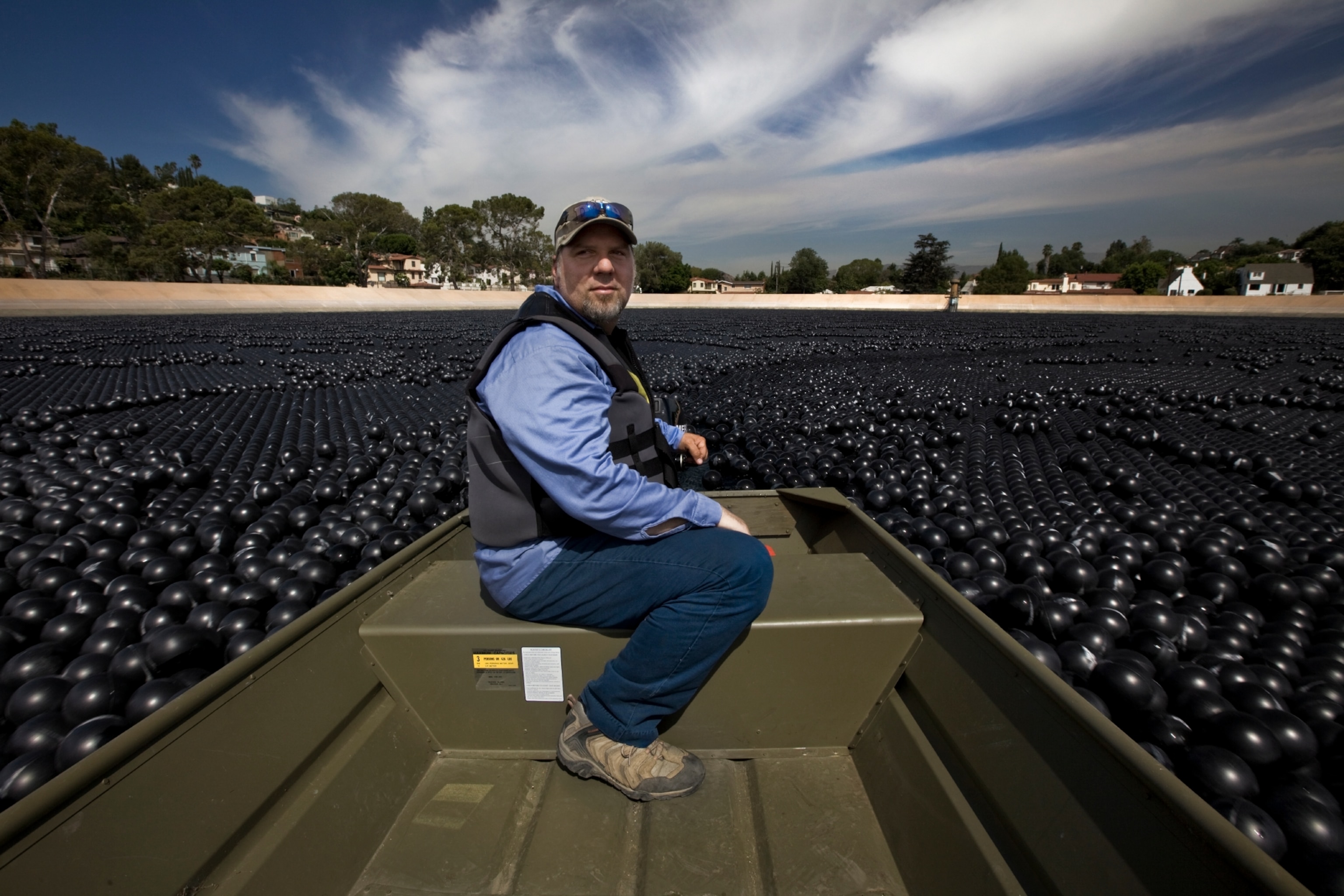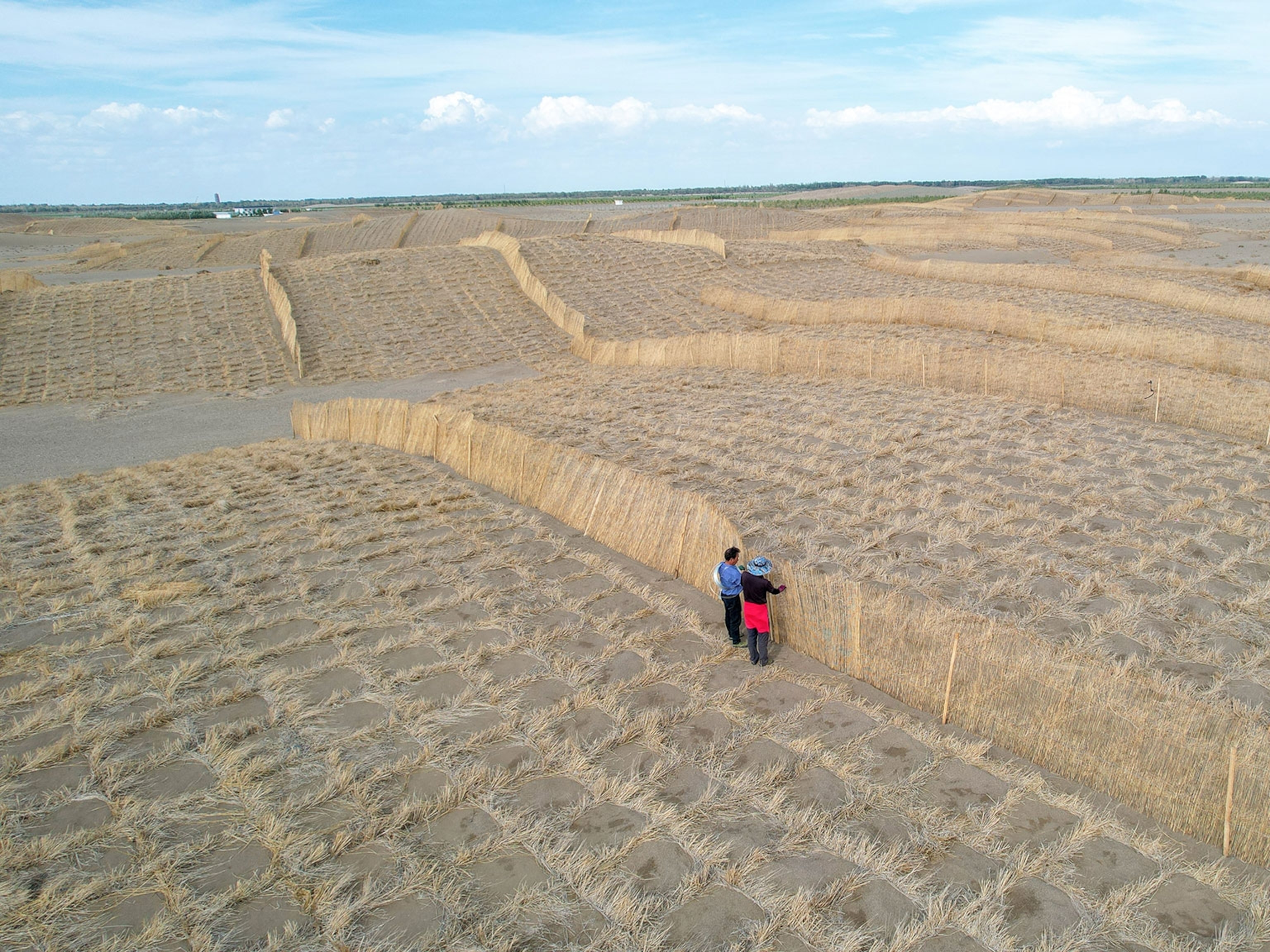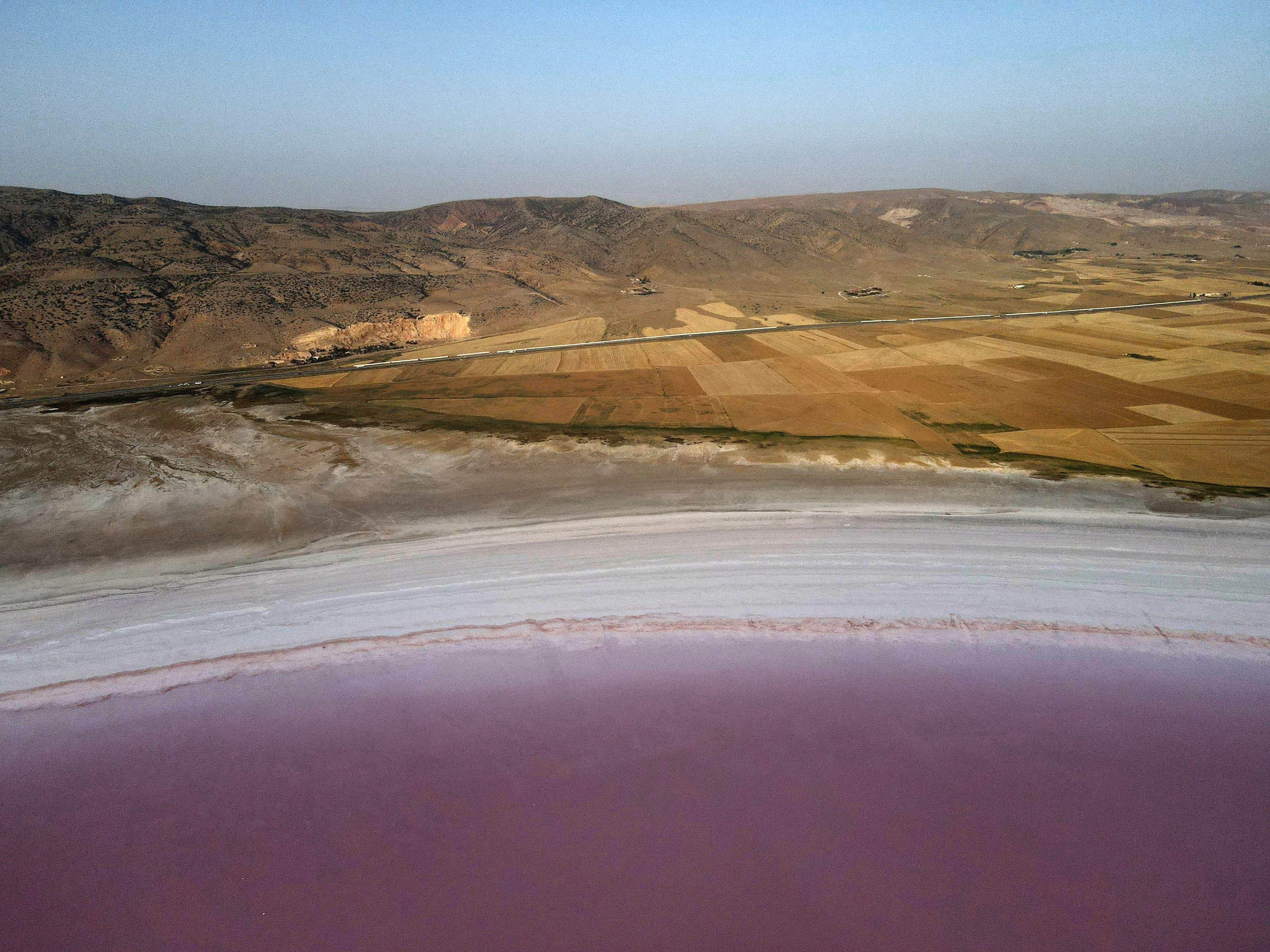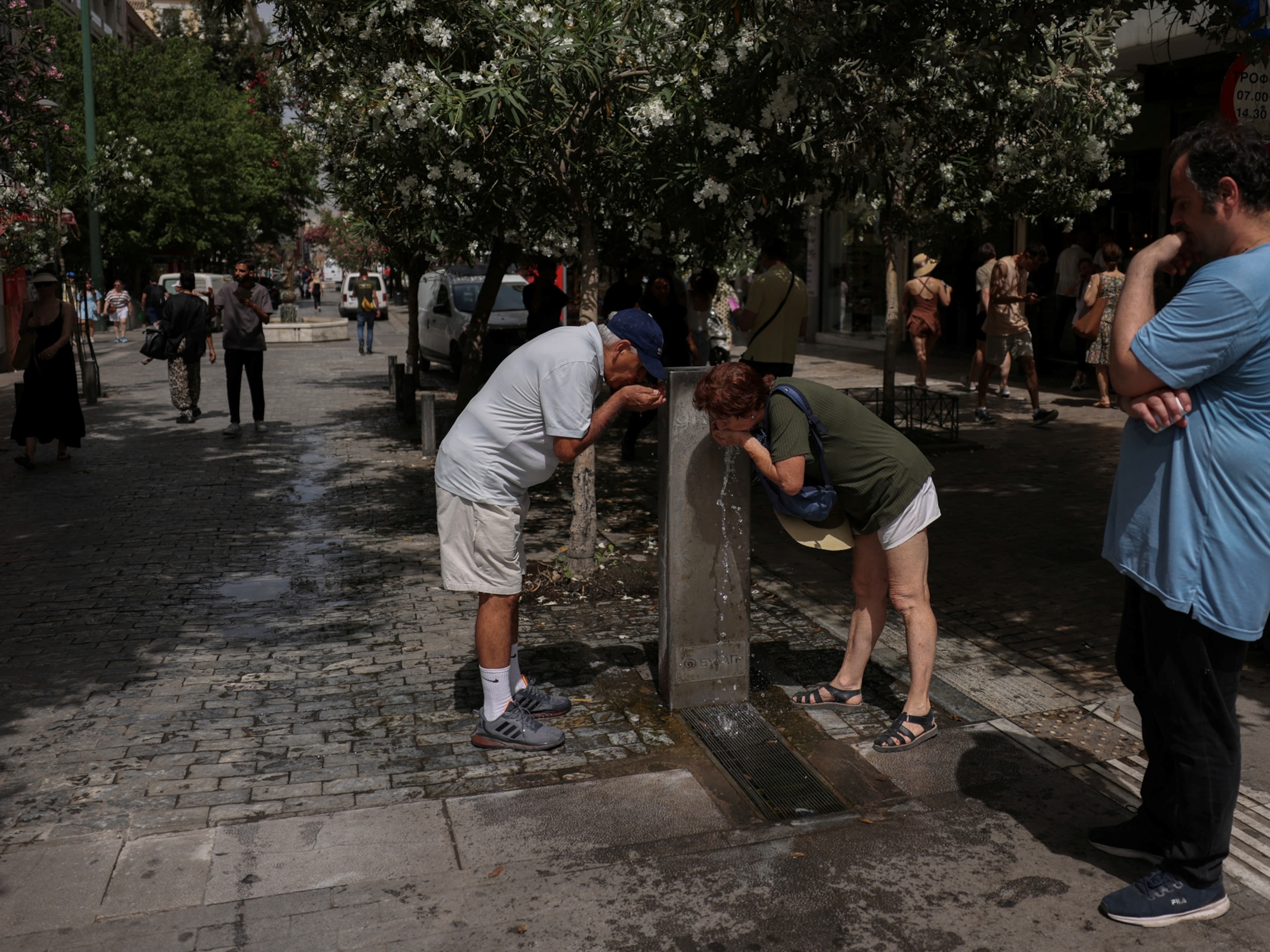
Why Did L.A. Drop 96 Million ‘Shade Balls’ Into Its Water?
The plastic balls, which can save water and protect water quality, are an attempt to cope with California’s severe drought.
Los Angeles has turned its main reservoir into a giant ball pit.
City officials hope millions of “shade balls” released into the Los Angeles Reservoir will save water in the midst of the worst drought in California history.
On Monday Los Angeles Mayor Eric Garcetti supervised the latest onslaught of 4-inch black plastic balls, bringing the total count to 96 million in the 175-acre reservoir. Located in Sylmar, the reservoir holds up to 3.3 billion gallons, enough to supply the city with drinking water for up to three weeks.
The city says the balls will shade and cool the water, reducing evaporation from the reservoir and making it less susceptible to algae, bacterial growth, and chemical reactions that can produce harmful substances.
The effort by the Los Angeles Department of Water and Power (LADWP) “is emblematic of the kind of creative thinking we need to meet [the drought’s] challenges,” Garcetti said in a statement. (See “When the Snows Fail.”)
The balls cost 36 cents each, for a total of $34.5 million. The utility has been testing the concept since 2008, reporting that shade balls reduce evaporation by 85 to 90 percent. That should equate to saving nearly 300 million gallons a year, enough to provide drinking water for 8,100 people, said Los Angeles City Councilmember Mitchell Englander.
The balls also inhibit microorganism growth, reducing the treatment the water must undergo through other means. That could save the city $250 million over time, said Garcetti.
Made of black polyethylene, shade balls are filled with water so they don’t blow away. A coating resists ultraviolet light and degradation. The manufacturers (XavierC, Artisan Screen Process, and Orange Products) say the balls should last about 25 years.
Ed Osann, a senior policy analyst at the Natural Resources Defense Council, told Bloomberg that the shade balls probably won’t release any toxic materials into the water supply. (NRDC has not yet responded to a request for comment.)
Genesis of an Idea
The Los Angeles utility is the first to use shade balls on a large scale. The idea came from now-retired LADWP biologist Brian White, who was inspired by the “bird balls” used to deter birds in ponds along runways.
In addition to the Los Angeles Reservoir, shade balls previously have been deployed on the Upper Stone, Elysian, and Ivanhoe reservoirs. The Las Virgenes Water District is also using them on its reservoir north of the city.
The shade balls are one way Los Angeles has cut its water use by 15 percent in the past two years, in addition to restrictions on irrigation and other measures. (See five things you should know about California’s drought.)










